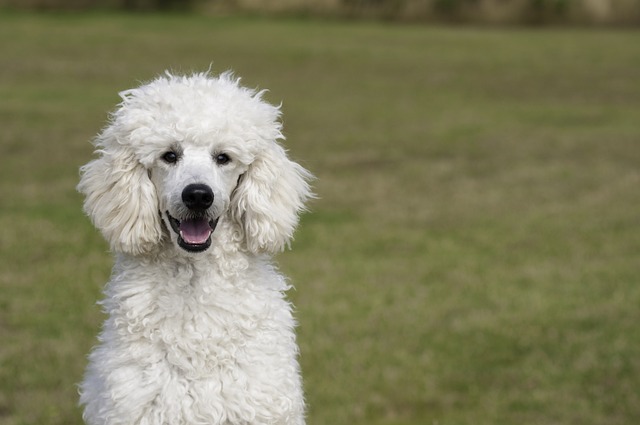
How can I tell if my dog's heatstroke is serious
Let’s be real: It’s a sticky August morning in Los Angeles, and you took your 2-year-old Golden Retriever, Max, for a walk a little later than usual
The sight of your Poodle the door, tail wagging wildly, is pure joy—until you spot the muddy paw prints tracking across your kitchen tiles. Keeping those elegant paws clean isn’t just about protecting your home; it’s essential for your dog’s well - being. Let’s explore how to turn paw care from a chore into a bonding experience.
Poodles’ signature curly coats are both a blessing and a curse. Those tight curls act like tiny Velcro, snagging everything from grass seeds to gum on city sidewalks. After a rainy walk, their paws transform into muddy mops, and embedded debris can cause painful cuts or infections. It’s like your dog’s feet are on a constant scavenger hunt—for all the wrong things.
The key to prevention is quick action. Keep a stash of unscented, hypoallergenic pet wipes by the door. As soon as you get home, sit on the floor and call your Poodle over. Offer a gentle scratch behind the ears, then lift each paw one by one. Wipe between the pads and around the nails, rewarding with a tiny treat after each paw. Soon, your dog will associate clean - up time with cuddles and snacks.
 For deeper cleans, a DIY paw bath does the trick. Fill a plastic container with warm water—just enough to cover the paws—and add a splash of apple cider vinegar (a natural antiseptic loved by many pet owners). Let your Poodle soak for a minute, then use a soft toothbrush to gently scrub away stubborn dirt. Finish with a thorough towel dry, paying extra attention to the areas between the toes.
For deeper cleans, a DIY paw bath does the trick. Fill a plastic container with warm water—just enough to cover the paws—and add a splash of apple cider vinegar (a natural antiseptic loved by many pet owners). Let your Poodle soak for a minute, then use a soft toothbrush to gently scrub away stubborn dirt. Finish with a thorough towel dry, paying extra attention to the areas between the toes.
Investing in paw gear can be a game - changer. In winter, booties protect against salt and ice that can crack paw pads. In summer, paw wax creates a barrier against sizzling hot pavement. But sizing matters—try them on at home and walk your dog around to check for rubbing. Many local pet stores offer hassle - free returns, so don’t be afraid to experiment.
Cultural differences shine through in paw care, too. In some neighborhoods, dogs in designer booties are a common sight, while others frown on “over - dressing” pets. Join local dog groups on social media to get the scoop on unwritten rules. You might discover the best spots to buy eco - friendly wipes or learn how neighbors handle muddy paws after hikes.
Persistent issues like red, swollen paws or excessive licking demand immediate attention. Ignoring these signs not only causes your dog discomfort but could violate local animal welfare laws in some areas. Reach out to your vet promptly—they might recommend a medicated wash or an allergy test. Your dog’s paws are their tires on life’s journey, and regular maintenance is key.
With a little creativity and consistency, paw cleaning can become a relaxing ritual. Your Poodle will strut with confidence on clean, healthy paws, and you’ll enjoy a cleaner home. After all, those wagging tails and happy eyes make every wipe, soak, and scrub more than worth it.

Let’s be real: It’s a sticky August morning in Los Angeles, and you took your 2-year-old Golden Retriever, Max, for a walk a little later than usual

You're enjoying a summer afternoon at the park when you notice your dog has stopped panting and appears disoriented - their gums are bright red

Let’s paint the picture: You’re in your Denver apartment, watching your 4-year-old Boston Terrier, Ruby, plop down mid-play session with her favorite toy

Many dog owners notice their pets nails seem shorter after regular walks,but how much does this daily activity actually help?The answer depends on where you walk—concrete sidewalks or asphalt streets gently file nails as a dog's paws hit the ground

Most dog owners notice their pup scooting across the carpet at some point, but few connect it to impacted anal glands. These small sacs near a dog’s rectum secrete a scent for marking territory

Most vets agree that regular dog teeth cleaning is key to avoiding painful dental issues later. For healthy adult dogs, a professional cleaning at the vet’s office every 12 to 18 months usually works well.